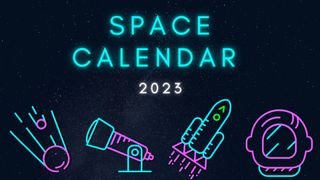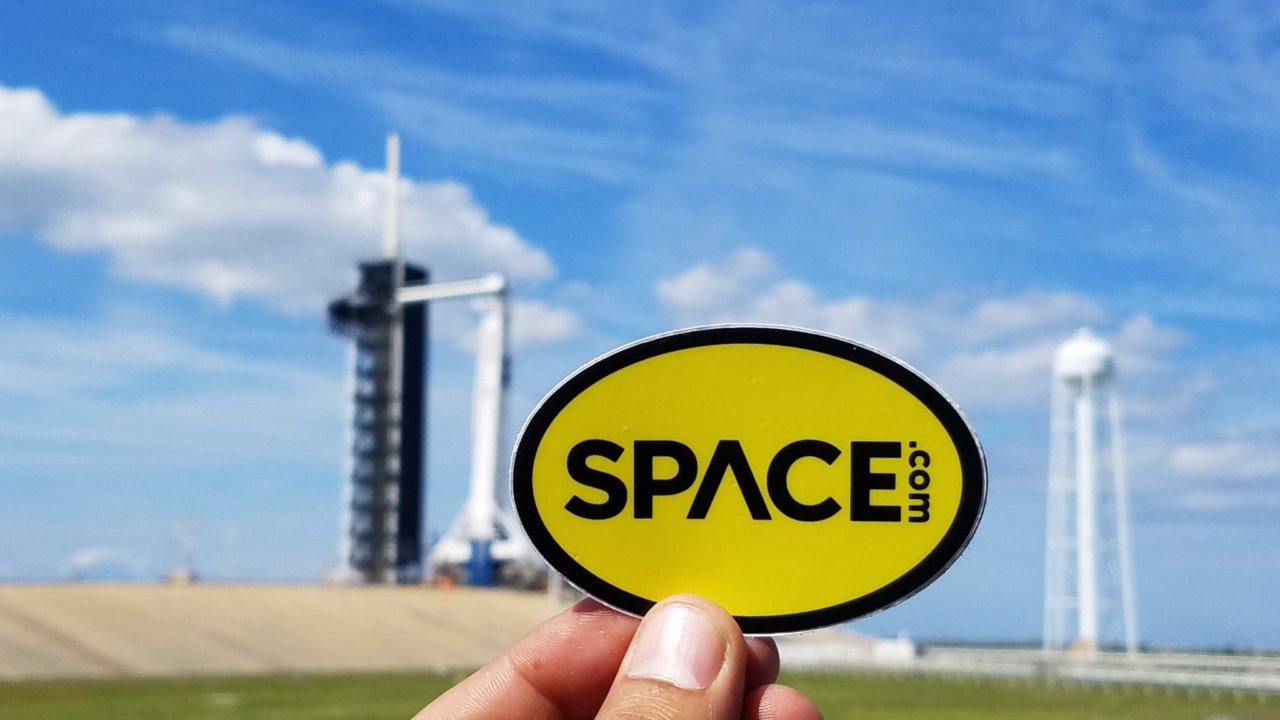2023 is a busy year for spaceflight and exploration enthusiasts with countless launches, mission milestones and skywatching events to look forward to.
With so much going on, it's hard to keep track of everything. Never fear — keep up with the latest events in our 2023 space calendar. You can also Find out what's up in the night sky this month with our visible planets guide and skywatching forecast.
Please note: Launch dates are subject to change and will be updated throughout the year as firmer dates arise. Please DO NOT schedule travel based on a date you see here. Launch dates are collected from NASA events, ESA news, Roscosmos space launch schedule, Spaceflight Now launch schedule, Everyday Astronaut and others.
Related: Wondering what happened today in space history? Check out our "On This Day in Space" video!
November

Nov. 17: The Leonid meteor shower peaks tonight! The shower is active between Nov. 3 and Dec. 2. Up to 15 meteors per hour are predicted during the peak of the shower, occurring overnight on Friday, Nov. 17 in the Americas. At that time, Earth will be traversing the densest part of the comet's debris train.

SpaceX is planning to launch the second test flight of its Starship rocket, pending environmental reviews. The U.S. Federal Aviation Administration (FAA) announced Oct. 31 the completion of its Starship safety review. SpaceX and its founder and CEO, Elon Musk, have said that the latest vehicle has passed all of its prelaunch tests and is ready to go.

Nov. 27: The November Full Moon, traditionally known as the Beaver Moon or Frost Moon, always shines within or near the stars of Taurus and Aries. The moon will reach its full phase, opposite the sun in the western pre-dawn sky, at 4:16 a.m. EST, 1:16 a.m. PST, or 09:16 GMT.
December
Dec. 1: Russia will launch a Soyuz rocket carrying the Progress MS-25 spacecraft to the International Space Station on a cargo and resupply mission.
Dec. 12: The new moon will arrive at 6:32 p.m. EST (2332 GMT).
Dec. 14: The Geminid meteor shower peaks tonight! The shower is active between Dec. 4 and Dec. 17.
Dec. 21: Today is the winter solstice for the Northern Hemisphere and the summer solstice for the Southern Hemisphere.
Dec. 21: The Ursid meteor shower peaks tonight! The shower is active from Dec. 13 to Dec. 24.
Dec. 24: A United Launch Alliance Vulcan Centaur rocket will launch on its inaugural flight with the Peregrine commercial lunar lander for Astrobotic. It will lift off from Space Launch Complex 41 at Cape Canaveral Space Force Station in Florida.
Dec. 26: The full moon of December, known as the Cold Moon, will occur at 7:33 p.m. EST (0033 GMT on Dec. 27).
December: A United Launch Alliance Atlas 5 rocket will launch the USSF 51 mission for the U.S. Space Force.
2024
Jan. 3-4: The time of the shower's peak is set for about 4 a.m. EST on Jan. 4, which favors eastern North America, as previously reported on Space.com. Viewing conditions for the Quadrantids is good for 2024 as there will be a 47% illuminated waning crescent moon in the constellation Virgo during the peak, providing much less of a hindrance to meteor viewing compared to 2023.
Jan. 10: Axiom Space's third private astronaut mission will launch to the ISS from NASA's Kennedy Space Center in Florida, using SpaceX's Crew Dragon spacecraft and Falcon 9 rocket. The four crewmembers include a former NASA astronaut, a European Space Agency reserve astronaut and a passenger who flew to suborbital space with Virgin Galactic earlier this year.
Jan. 12: A SpaceX Falcon 9 rocket will launch the IM-1 mission with the Nova-C lander built and owned by Intuitive Machines from the Kennedy Space Center in Florida.
Jan. 25: January's full moon, known as the Wolf Moon, or Micro Moon, will rise.
Feb. 9: The moon will be at its closest point to Earth in orbit — but unfortunately, this "supermoon" will be too close to the sun to be visible to skywatchers on the ground. Despite its proximity to Earth, skywatchers won't be able to see the moon, because it will be a new moon. It will be too near to the sun to be seen, and will be invisible as it passes across our daytime sky.
April: A United Launch Alliance Atlas V rocket will launch Boeing's CST-100 Starliner spacecraft on its first crewed flight. NASA astronauts Butch Wilmore and Mike Fincke, along with an unidentified third crew member, will fly on the mission. The Crew Test Flight to the International Space Station will lift off from Cape Canaveral Space Force Station, Florida.
Follow us on Twitter @Spacedotcomor Facebook

